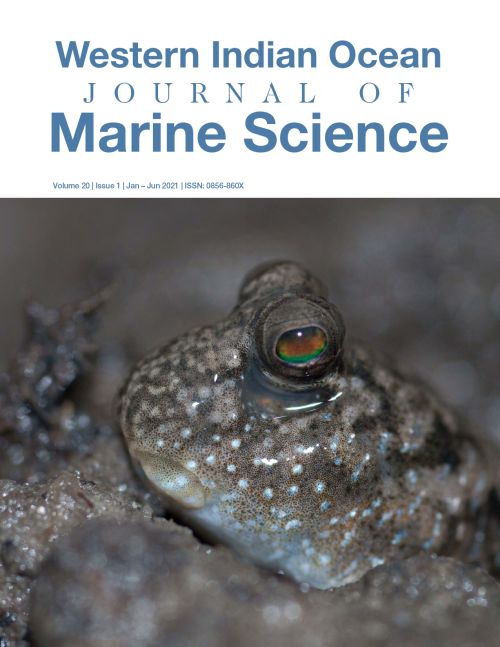Main Article Content
Diversity of mangrove fungal endophytes from selected mangrove species of coastal Kenya
Abstract
Endophytes are bacteria or fungi living asymptomatically in the internal tissues of plants. They are symbiotic in nature and can be exploited for novel bioactive metabolites with applications in agriculture, medicine and industry. Mangrove fungal endophytes from the marine environment are abundant and have been recognized as sources of bioactive natural products. The study was designed to isolate, purify and identify mangrove fungal endophytes from selected common mangrove species of Gazi Bay, Tudor and Mida creek on the Kenya coast. The colonization rate and isolation rate of the mangrove fungal endophytes were determined. The studied mangrove species were Rhizophora mucronata (red mangrove), Sonneratia alba (mangrove apple), Avicennia marina (grey or white mangrove), and Ceriops tagal (spurred mangrove). Samples from twigs of these mangrove species were collected and analyzed using standard methods. Isolation of pure cultures of the endophytes was performed using Potato Dextrose Agar (PDA) incubated at 28 ± 1ºC for 5 days. The fungal isolates were identified under a light microscope based on colony morphology characteristics, type and presentation of conidiophores and conidia. A total of 18 different mangrove fungal endophytes were identified and these belonged to 5 genera. These were Aspergillus, Penicillium, Fusarium, Cephalosporium and Blastomyces, with Aspergillus being the most dominant genus. Tudor Creek recorded the highest fungal community diversity (H’ = 1.35) and Gazi Bay had the lowest diversity (H’ = 0.45). Fungal community similarity based on the identified genera was highest between Gazi Bay and Mida Creek (0.80) and lowest between Tudor Creek and Mida Creek (0.57). The selected mangrove species recorded a colonization rate of endophytic fungi of between 38.9 – 94.4 % with the highest habitation being associated with S. alba and C. tagal. There were differences and similarities in the colonization rate within mangrove species across study sites. Findings of this study have confirmed that the selected mangrove species exhibit high diversity of fungal endophytes with host recurrence and spatial heterogeneity.






